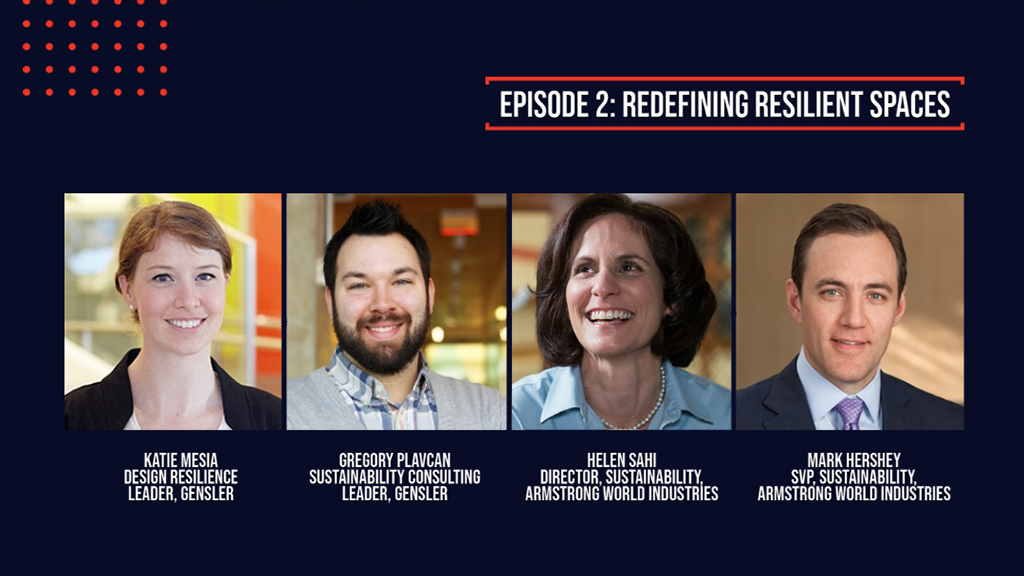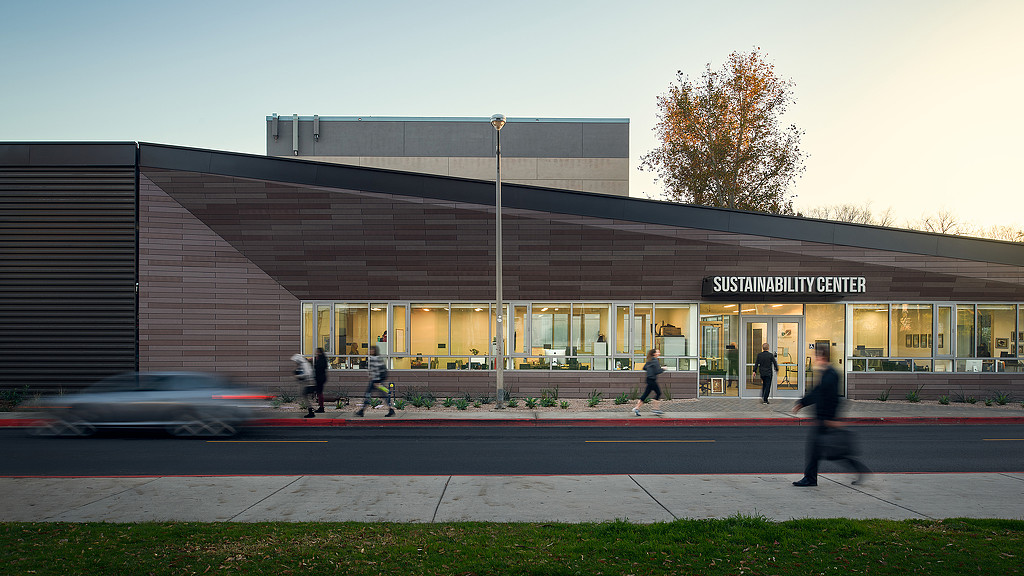Redefining Resilient Spaces Through Smart Material Selection
April 29, 2021
Editor's note: this podcast episode originally appeared on the Gensler Design Exchange podcast. This episode is the second in a three-part series co-hosted with Armstrong World Industries that examines how our organizations are reimagining buildings, spaces, and products to enhance health and well-being in our return to the office and shared spaces. (Listen to the first episode here.)
The entire building industry is recognizing the potential consequences and risks from climate change, as companies mobilize to address the negative impacts of the built environment. As companies strategize how to align their real estate portfolios with their environmental, social, and governance (ESG) goals, many are wondering where to start. A crucial, but lesser-known opportunity to reduce the carbon impact of the built environment is through material selection.
Today, the harvesting, manufacture, and transportation of the raw materials used in building construction — what we call embodied carbon — accounts for roughly a quarter of annual building emissions and some 11% of global emissions. Together, we have an opportunity to decrease embodied carbon levels throughout the built environment simply by making smart, forward-thinking choices about the materials used in a project.
In a recent Gensler Design Exchange podcast episode, Katie Mesia, Gensler Southeast Region Design Resilience leader, moderates a conversation between Gregory Plavcan, Gensler Sustainability Consulting leader; Helen Sahi, Director of Sustainability at Armstrong; and Mark Hershey, SVP of Sustainability at Armstrong, about how our two organizations are charting the course toward a more sustainable, resilient future — for ourselves and for our clients.

Making buildings “healthy” for people and the planet will be both an opportunity and an imperative for our industry. Occupants and building owners are beginning to value the benefits of spaces and structures that are sustainable and resilient — spaces and buildings that use less energy, are built with healthier materials, and can adapt to severe weather events. They are driving market demand for sustainable and resilient buildings so much that we are reaching a point at which places and products that don’t achieve design resilience are at risk of becoming devalued — and the bar will keep getting higher.
Architects, designers, and manufacturers have an opportunity to decrease embodied carbon levels throughout the built environment by the materials they choose to work with. Tackling climate action in our industry starts with making conscious decisions about how the materials with which we build are manufactured and sourced.
The built environment, and the products within it, can help achieve a new era of global wellness. When we embrace impact investing, resource efficiency, and mission-driven goals to decarbonize, we lead by example and guide the way for others to deliver on their promises.
For media inquiries, email .
